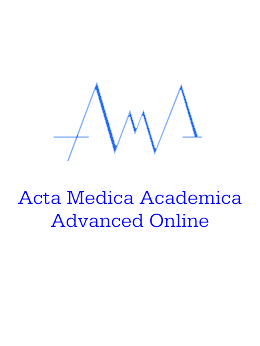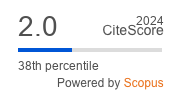Review of Behavioral Risks Among Kazakhstani Adolescents and the Experience ofEstablishing a Health School in Kazakhstan
DOI:
https://doi.org/10.5644/ama2006-124.477Keywords:
Health School, Healthy Lifestyle, Prevention, Adolescents, SuicidesAbstract
Objective. This study aimed to investigate long-term trends in the prevalence of behavioral risk factors among adolescents in Kazakhstan and highlight a successful preventive intervention, specifically the establishment of a health school.
Materials and Methods. The authors analyzed publications from the past 10 years to monitor behavioral risk factors, existing trends among adolescents in Kazakhstan and abroad, and recommendations and guidelines from global health authorities.
Results. Alongside a decline in tobacco and alcohol consumption, there has been an observed increase in obesity, vaping, depression, use of digi- tal devices, and engagement with TikTok. A model is proposed based on implementing a Preventive Program by establishing a Health School, guided by international best practices and recommendations.
Conclusion. In recent years, there has been a noticeable shift in public health behavior in Kazakhstan. While tobacco use and alcohol abuse have declined, new challenges are emerging, such as increasing rates of obesity among adolescents and excessive engagement with online games, gadgets, and social media. Simultaneously, physical activity levels have significantly decreased. To promote healthy lifestyle habits, a Health School was established at the Republican Sanatorium “Alatau” under the Ministry of Health of the Republic of Kazakhstan.
References
World Health Organization. Report “Assessment of Suicide Prevention in Kazakhstan: East Kazakhstan and Kyzylorda Regions”. Almaty: WHO; 2015. p. 23.
Unicef. United Nations Children’s Fund. Astana: Report in Kazakhstan (UNICEF); 2024. p. 40.
Unicef. Study on prevalence, underlying causes, risk and protective factors in respect to suicides and attempted suicides in Kazakhstan. Astana: The UN Children’s Fund (UNICEF) in the Republic of Kazakhstan; 2014. p. 104.
World Health Organization. Preventing suicide: a global imperative [report on the Internet]. World Health Organization; 2014 [cited 2024 Jul 9]; 89. Available from: https://iris.who.int/handle/10665/131056.
NCD Risk Factor Collaboration (NCD-RisC). General and abdominal adiposity and hypertension in eight world regions: a pooled analysis of 837 population-based studies with 7.5 million participants. Lancet. 2024;404(10455):851-63. doi: 10.1016/S0140-6736(24)01405-3.
NCD Risk Factor Collaboration (NCD-RisC). Worldwide trends in underweight and obesity from 1990 to 2022: a pooled analysis of 3663 population-representative studies with 222 million children, adolescents, and adults. Lancet. 2024;403(10431):1027-1050. doi: 10.1016/S0140-6736(23)02750-2. Epub 2024 Feb 29.
Patton GC, Sawyer SM, Santelli JS, Ross DA, Afifi R, Allen NB, et al. Our future: a Lancet commission on adolescent health and wellbeing. Lancet. 2016;387(10036):2423-78. doi: 10.1016/S0140-6736(16)00579-1. Epub 2016 May 9.
Gates M. Advancing the adolescent health agenda. Lancet. 2016;387(10036):2358-9. doi: 10.1016/S0140-6736(16)30298-7. Epub 2016 May 9.
Sheehan P, Sweeny K, Rasmussen B, Wils A, Friedman HS, Mahon J, et al. Building the foundations for sustainable development: a case for global investment in the capabilities of adolescents. Lancet. 2017;390(10104):1792-806. doi: 10.1016/S0140-6736(17)30872-3. Epub 2017 Apr 19.
The Lancet Public Health. Investing in adolescent health and wellbeing. Lancet Public Health. 2024;9(9):e635. doi: 10.1016/S2468-2667(24)00193-2. Epub 2024 Aug 16.
Mytton OT, Donaldson L, Goddings AL, Mathews G, Ward JL, Greaves F, et al. Changing patterns of health risk in adolescence: implications for health policy. Lancet Public Health. 2024;9(8):e629-34. doi: 10.1016/S2468-2667(24)00125-7. Epub 2024 Jul 9.
Jessor R. Risk behavior in adolescence: a psychosocial framework for understanding and action. J Adolesc Health. 1991;12(8):597-605. doi: 10.1016/1054-139x(91)90007-k.
Arnett J. Reckless behavior in adolescence: a developmental perspective. Developmental Review. 1992;12(4):339-73. DOI: https://doi.org/10.1016/0273-2297(92)90013-R.
Ball J, Grucza R, Livingston M, Ter Bogt T, Currie C, de Looze M. The great decline in adolescent risk behaviours: Unitary trend, separate trends, or cascade? Soc Sci Med. 2023;317:115616. doi: 10.1016/j.socscimed.2022.115616. Epub 2022 Dec 16.
Mills KL, Goddings AL, Clasen LS, Giedd JN, Blakemore SJ. The developmental mismatch in structural brain maturation during adolescence. Dev Neurosci. 2014;36(3-4):147-60. doi: 10.1159/000362328. Epub 2014 Jun 27.
Ford CA, Boyer CB, Halpern CT, Katzman DK, Ross DA, Berg TD, et al. The Distinguished Dozen: 2023 Journal of Adolescent Health Articles Making Distinguished Contributions to Adolescent and Young Adult Health. J Adolesc Health. 2024;74(2):211-5. doi: 10.1016/j.jadohealth.2023.11.003.
Dyakova M, Hamelmann C, Bellis MA, Besnier E, Grey CNB, Ashton K, et al. Investment for health and well-being: a review of the social return on investment from public health policies to support the implementation of the sustainable development goals through the health 2020 policy framework. Health evidence network synthesis report, No. 51. Copenhagen: WHO Regional Office for Europe; 2017.
Berkley S, Bobadilla JL, editors. World development report 1993 : investing in health (English) [report on the internet]. Washington: World Bank Group; 2013 [cited 2024 July 8]. Available from: http://documents.worldbank.org/curated/en/468831468340807129.
Schäferhoff M, Evans D, Burnett N, Komaromi P, Kraus J, Levin A, et al. Estimating the costs and benefits of education from a health perspective. Background paper for the Oslo Summit on Education for Development. Seek Development; 2015 [cited 2024 July 8]. Available from: http://www.resultsfordevelopment.org/sites/resultsfordevelopment.org/files/resources/SEEK.pdf.
Green BN, Johnson CD, Adams A. Writing narrative literature reviews for peer-reviewed journals: secrets of the trade. J Chiropr Med. 2006;5(3):101-17. doi: 10.1016/S0899-3467(07)60142-6.
WHO. Global Adult Tobacco Survey: Kazakhstan, 2019. Copenhagen: WHO Regional Office for Europe; 2023. Licence: CC BY-NC-SA 3.0 IGO.
Battakova ZE, Abdrakhmanova SZ, Adaeva AA, Slazhneva TI. Comparative analysis of factors motivating tobacco use among adolescents in the republic of Kazakhstan. Proceedings of the National Academy of sciences of the Republic of Kazakhstan. Series of Biology and Medicine. 2018;329(5):8-15. DOI: 10.32014/2018.2518-1629.2
WHO. Global report on trends in prevalence of tobacco use 2000–2030. Geneva: World Health Organization; 2024. Licence: CC BY-NC-SA 3.0 IGO.
Bureau of National Statistics [cited 2025 May 2] Available from: https://stat.gov.kz/en/industries/economy/national-accounts/publications/113759/.
NCD Risk Factor Collaboration (NCD-RisC). Heterogeneous contributions of change in population distribution of body mass index to change in obesity and underweight. Elife. 2021;10:e60060. doi: 10.7554/eLife.60060.
NCD Risk Factor Collaboration (NCD-RisC). Height and body-mass index trajectories of school-aged children and adolescents from 1985 to 2019 in 200 countries and territories: a pooled analysis of 2181 population-based studies with 65 million participants. Lancet. 2020;396(10261):1511-24. doi: 10.1016/S0140-6736(20)31859-6.
Branca F, Nikogosian H, Lobstein T. The challenge of obesity in the WHO European region and the strategies for response. World Health Organization [serial on the Internet]. 2007 [cited 2024 Sep 14]. Available from: https://www.researchgate.net/publication/341114162_The_challenge_of_obesity_in_the_WHO_European_region_and_the_strategies_for_response.
de Onis M, Blössner M, Borghi E. Global prevalence and trends of overweight and obesity among preschool children. Am J Clin Nutr. 2010;92(5):1257-64. doi: 10.3945/ajcn.2010.29786. Epub 2010 Sep 22.
Dubois L, Ohm Kyvik K, Girard M, Tatone-Tokuda F, Pérusse D, Hjelmborg J, et al. Genetic and environmental contributions to weight, height, and BMI from birth to 19 years of age: an international study of over 12,000 twin pairs. PLoS One. 2012;7(2):e30153. doi: 10.1371/journal.pone.0030153. Epub 2012 Feb 8.
Battakova ZE, Mukasheva SB, Slazhneva TI, Abdrakhmanova SZ, Adayeva AA, Akimbayeva AA. Development of national monitoring systems for school-aged children’s health-related behaviors and quality of life in public health in Kazakhstan. Medicine. 2018;195(9):2-7. DOI: 10.31082/1728-452X-2018-195-9-2-7.
Battakova Z, Mukasheva S, Abdrakhmanova S, Adayeva A, Akimbayeva A. Childhood obesity in Kazakhstan: behavioural health risks associated with diet and physical activity. Public Health Panorama. 2017;3(4):695-702.
Lajunen HR, Kaprio J, Rose RJ, Pulkkinen L, Silventoinen K. Genetic and environmental influences on BMI from late childhood to adolescence are modified by parental education. Obesity (Silver Spring). 2012;20(3):583-9. doi: 10.1038/oby.2011.304. Epub 2011 Oct 13.
Keane E, Layte R, Harrington J, Kearney PM, Perry IJ. Measured parental weight status and familial socio-economic status correlates with childhood overweight and obesity at age 9. PLoS One. 2012;7(8):e43503. doi: 10.1371/journal.pone.0043503. Epub 2012 Aug 17.
Hendrie GA, Coveney J, Cox DN. Defining the complexity of childhood obesity and related behaviours within the family environment using structural equation modelling. Public Health Nutr. 2012;15(1):48-57. doi: 10.1017/S1368980011001832. Epub 2011 Aug 2.
World Health Organization. Report of the Commission on Ending Childhood Obesity [report on the Internet]. WHO; 2016:51 [cited 2024 July 7]. Available from: https://apps.who.int/gb/ebwha/pdf_files/WHA69/A69_8-ru.pdf.
NCD Risk Factor Collaboration (NCD-RisC). Diminishing benefits of urban living for children and adolescents’ growth and development. Nature. 2023;615(7954):874-83. doi: 10.1038/s41586-023-05772-8. Epub 2023 Mar 29.
Wijnhoven TM, van Raaij JM, Yngve A, Sjöberg A, Kunešová M, Duleva V, et al. WHO European Childhood Obesity Surveillance Initiative: health-risk behaviours on nutrition and physical activity in 6-9-year-old school-children. Public Health Nutr. 2015;18(17):3108-24. doi: 10.1017/S1368980015001937. Epub 2015 Jul 1.
Kukanova GZ, Orunkhanov KK, Karaulova GS, editors. Kazakhstan Multiple Indicator Cluster Survey [report on the Internet]. Astana: The Ministry of National Economy of the Republic of Kazakhstan; 2016 [cited 2024 Jun 15]. Available from: https://www.unicef.org/kazakhstan/en/reports/multiple-indicator-cluster-survey-mics-2015.
Battakova ZE, Tokmurziyeva GZ, Skazhneva TI, Abdrakhmanova SZ. Organization of epidemiological surveillance systems for childhood obesity (international experience and actions of Kazakhstan). Collection of materials of the XII international scientific-practical conference “Scientific prospects of the XXI century. Achievements and prospects of the new century”. 2015;3:18-21.
WHO European Childhood Obesity Surveillance Initiative (COSI). Methods of data collection [report on the Internet]. Copenhagen: WHO Regional Office for Europe; 2016:42 [cited 2024 Aug 3]. Available from: https://iris.who.int/bitstream/handle/10665/366699/WHO-EURO-2017-5531-45296-68923-rus.pdf?sequence=3&isAllowed=y.
Deville JC, Sarndal CE. Calibration Estimators in Survey Sampling. Journal of the American Statistical Association. 1992;87(418):376-82. DOI: https://doi.org/10.2307/2290268.
de Onis M, Onyango AW, Borghi E, Siyam A, Nishida C, Siekmann J. Development of a WHO growth reference for school-aged children and adolescents. Bull World Health Organ. 2007;85(9):660-7. doi: 10.2471/blt.07.043497.
Battakova ZE, Mukasheva SB, Slazhneva TI. Methodology for the development of national monitoring of schoolchildren’s behavior related to health and quality of life, methodological recommendations. National Center for Public Health. 2018;24.
Doku D, Koivusilta L, Raisamo S, Rimpelä A. Do socioeconomic differences in tobacco use exist also in developing countries? A study of Ghanaian adolescents. BMC Public Health. 2010;10:758. doi: 10.1186/1471-2458-10-758.
Domić A, Tahirović H, Čižek Sajko M, Đulabić B. Marijuana smoking among school-aged adolescents in the Brčko District of Bosnia and Herzegovina: A cross-sectional study. Acta Med Acad. 2017;46(1):16-26. doi: 10.5644/ama2006-124.182.
Domić A, Tahirović H, Nikić-Damjanovuć J, Čižek-Sajko M. The connection of the family’s socioeconomic status and consumption of cigarettes, alcohol and marijuana in adolescents of the Brčko district of Bosnia and Herzegovina. Srpski arhiv za celokupno lekarstvo. 2020;148(9-10):584-9. doi: 10.2298/SARH190717053D.
Downloads
Published
License
Copyright (c) 2025 Zhamilya Battakova, Margulan Shakirov, Kamila Battakova

This work is licensed under a Creative Commons Attribution-NonCommercial 4.0 International License.





